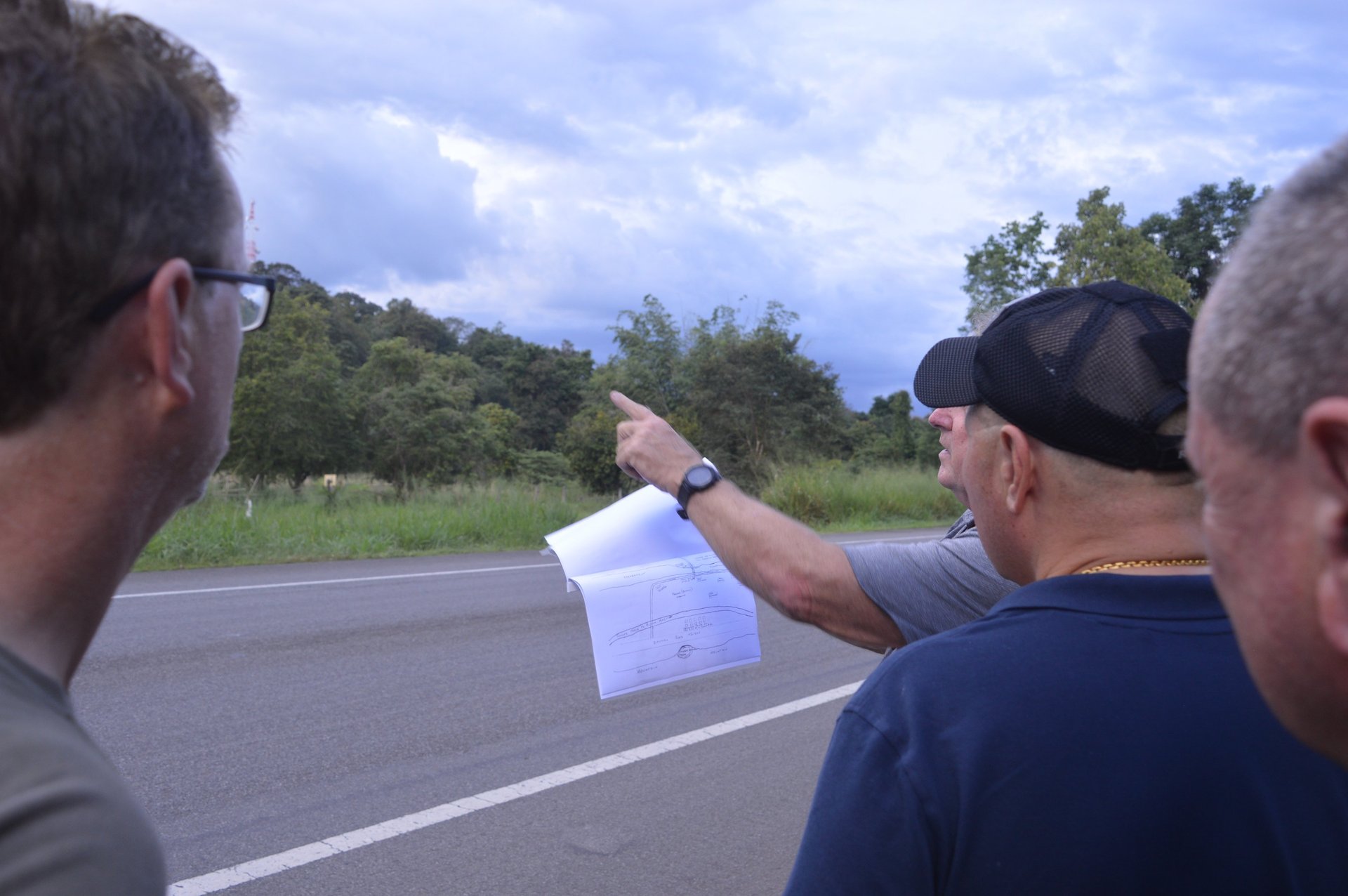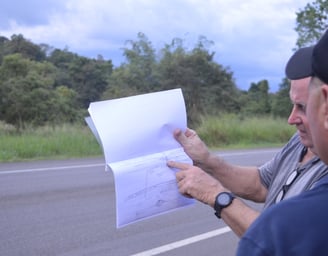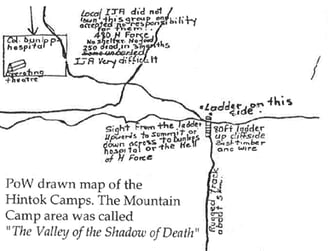
A Glimpse of the Hell of
Hintok Mountain Camp
You didn’t come this far to stop
Episode 19: Hintok Mountain Camp - A Grueling Journey
In our ongoing exploration of the Weary Dunlop Trail, the St Andrews Research Team stopped near the site of the Hintok Mountain Camp, a significant location along the Burma-Thailand Railway. This camp served as a base for D Force, who faced the daunting task of descending into Hintok Cutting each day to work tirelessly until sundown, only to make the arduous climb back up.
IN THEIR FOOTSTEPS BLOGWEARY DUNLOP TRAILDUNLOPS RESEARCH TRIP 1WW2 HISTORY
Toursofwar.com
2/7/20243 min read
The Unforgiving Terrain


The Challenges of Hintok Mountain Camp
The POWs at Hintok Mountain Camp performed various tasks daily, including:
Descending into Hintok Cutting to work on a particularly difficult section of the railway involving cuttings and embankments.
Laboring under the scorching sun throughout the day.
Laying sleepers and rails, ballasting, and other railway construction tasks.
Engaging in hard and demanding work, such as laying sleepers and rails, which took a toll on their physical and mental well-being.
Enduring challenging conditions and harsh living environments while working on the railway construction.
Participating in the construction of the railway near Hintok Mountain Camp, which required resilience and determination in the face of adversity.


Living Conditions at Hintok Mountain Camp
The living conditions at Hintok Mountain Camp were harsh and challenging. The camp was located in a remote and rugged area, with prisoners facing extreme heat, poor living conditions, and inadequate shelter. The prisoners worked on a particularly difficult section of the railway involving cuttings and embankments, which took a toll on their physical and mental well-being.
Description of the Camp
The camp was described as a "jungle camp" where prisoners lived in tents made of canvas, with little protection from the elements. The tents were often flooded during the wet season, and the prisoners had to endure the harsh conditions without proper shelter or sanitation facilities.
Medical Care
Despite the challenges, the medical care provided to the prisoners was remarkable. Lt Col Edward Dunlop, a noted Australian surgeon, commanded Dunlop Force and worked tirelessly to provide medical care to the sick and injured prisoners. The ingenuity of the POWs in manufacturing a distilling plant from stolen copper piping to produce saline fluid for intravenous treatment of cholera victims was a testament to their resilience and resourcefulness.
Harsh Environment at Hintok Mountain Camp
The POWs at Hintok Mountain Camp faced extreme heat, poor living conditions, and inadequate shelter. Despite these challenges, they demonstrated remarkable resilience and resourcefulness in coping with the harsh environment. Here are some ways they managed:
Medical Care: Lt Col Edward Dunlop, a noted Australian surgeon, commanded Dunlop Force and worked tirelessly to provide medical care to the sick and injured prisoners. The ingenuity of the POWs in manufacturing a distilling plant from stolen copper piping to produce saline fluid for intravenous treatment of cholera victims was a testament to their resilience and resourcefulness.
Community Support: The prisoners formed close bonds with each other, which helped them cope with the difficulties they faced. Officers accompanied the men on work parties and actively intervened to protect them from punishment, often taking the bashing themselves. This camaraderie and mutual support were crucial in maintaining morale and mental well-being.
Innovative Solutions: The POWs used their skills and ingenuity to improvise solutions to the challenges they faced. For example, they manufactured a distilling plant to treat cholera victims, demonstrating their ability to adapt and overcome adversity.
Spiritual Support: The presence of chaplains and other religious leaders provided spiritual support to the prisoners. Padre Keith Matheson from the Cruiser HMAS Perth arrived to provide help for the sick, and his presence helped maintain morale and hope.
Leadership: The leadership of officers like Lt Col Edward Dunlop and Lt Col John Williams played a significant role in maintaining order and discipline within the camp. Their leadership and guidance helped the prisoners stay focused on their tasks and maintain morale.
Physical Labor: The prisoners worked hard to complete their tasks, often under extreme conditions. Their physical labor and determination helped them cope with the harsh environment and maintain a sense of purpose.




Conclusion
The POWs at Hintok Mountain Camp demonstrated remarkable resilience and resourcefulness in coping with the harsh environment. Through medical care, community support, innovative solutions, spiritual support, leadership, and physical labor, they managed to endure the challenges they faced and maintain their morale and hope.
As we conclude our research journey along the Weary Dunlop Trail, we stop at the serene Home Phoey Toe Resort, a place where Lt Col Edward Dunlop, the renowned Australian surgeon, sought peace and solace. This resort is also the final resting place of his ashes and the location of the Weary Dunlop Memorial Park.
